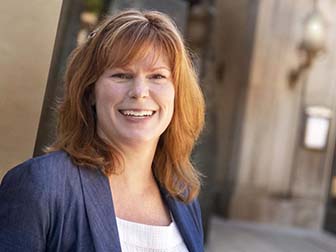UNIVERSITY PARK, Pa. — Roman DiBiase won’t soon forget the name of an early mentor when he began his career at Penn State in 2014.
He was recently named the Rudy L. Slingerland Early Career Professor of Geosciences, a distinction that honors the now retired Penn State professor and will help fund DiBiase’s research studying how landscapes erode over geologic time, shaping mountains and in an instant leading to hazards from fires, floods and landslides.
DiBiase’s research includes southern California, where he investigates how wildfires lead to stronger mudslides. In Pennsylvania, his work maps the impact of climate and land use on the landscapes of the Shale Hills Critical Zone Observatory. In Taiwan, he tracks how sediment moves in rivers to understand how mountain ranges erode and help predict flooding hazards.
These research projects are funded through the National Science Foundation, DiBiase said, but this professorship will improve computing capacity for his research group. Improving computing power to crunch data is critical, he said, because the ability to chart centimeter- to meter-scale changes of kilometer-size areas can be accomplished in days through the use of drones, lidar-equipped planes and satellite imagery, all producing vast amounts of data. A similar data collection a decade ago, if even possible, could take months or longer.
These technologies let DiBiase collect billions of data points for land and water surfaces — data as detailed as the size of gravel and boulders — but much of the land surface isn’t accessible by air due to the forest canopy. That’s where computing power comes in. In areas that are free of vegetation, imagery from drones sample the ground surface at even higher resolution, filling in gaps in data missed through lidar mapping.
“In Pennsylvania, we’ve relied on airborne lidar scanning,” DiBiase said. “Most data are of the canopy, but 5 or 10 percent of your scans will be of the ground. And then you can use that to reconstruct a high-resolution map of the ground surface. This is really important because it’s so critical for picking out landforms that you can’t see walking around on the ground.”
Across the board, technologies are advancing for geoscientists. This professorship will help DiBiase keep pace.
“Two developments that together catapulted this research and now pervade just about every aspect of geosciences, are inexpensive, high-quality drones and the ability to process the images themselves,” DiBiase said. “We can take a collection of photographs to build realistic 3D models. This has exploded in the past five or 10 years.”
DiBiase said the technology also allows geoscientists to more easily assess previously uncharted waters. Sections of river canyons in Taiwan, for example, are treacherous for researchers to survey in the field yet can be accessed by drones.
DiBiase said it means a lot to him to earn a distinction named after Slingerland, a geoscientist with similar research interests who helped him begin his Penn State career. He said Slingerland, who he still keeps in contact with, taught him about Pennsylvania landscapes and prepared him for teaching geosciences field camp, the annual capstone summer course to geosciences students.
“He was really instrumental in helping me learn the landscape and the problems that people are working on at Penn State,” DiBiase said. And he was a great faculty mentor that I could always bounce ideas off of.”
DiBiase received an early CAREER Award from the National Science Foundation in 2019. He earned his doctorate in geological sciences from Arizona State in 2011.



